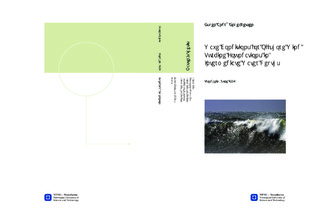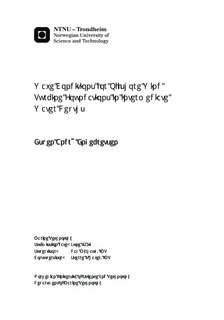| dc.description.abstract | In this thesis, the effects on regular waves when propagating from deep to shallow water have been investigated, assuming linear wave theory. The effects of shoaling, refraction, reflection and diffraction have been studied. The process and types of breaking waves has also been reviewed.Linear wave theory, second and higher order Stokes theory, Stream function theory, Solitary wave theory and Cnoidal theory have been reviewed. The relative validity of the different wave theories was also assessed.The effects on the wave spectrum as a sea state travels from deep to shallow water, described by the energy balance equation, has also been addressed. The effects addressed were wind, nonlinear wave-wave interactions, white-capping, bottom friction and surf-breaking. Two computer models for numerically solving the energy balance equation was mentioned, being SWAN and STWAVE where SWAN was chosen for use in the analyses.The NORA10 hindcast was believed not to properly take the change in water depth into account at the Dogger Bank Zone. At a point north of the location of interest, the water depth was of such a magnitude (81m) that the NORA10 hindcast was believed to yield credible data for the significant wave height and spectral peak period. A long term estimate of the 50 year significant wave height was performed from the NORA10 data at the point north of the Dogger Bank Zone, by the environmental contour method. This resulted in an estimated 50 year significant wave height of 11.74m and spectral peak period of 15.68s.The SWAN model was used on a test case from Svangstu (2011) to get familiar with the program, and investigate how the different physical effects influence the solution. With the knowledge acquired from the test case, the Dogger Bank case was analyzed in SWAN, to obtain the 50 year sea state parameters at the location of interest. The 50 year sea state north of the Dogger Bank Zone, the Dogger Bank bathymetry, as well as a constant wind of 23.3 m/s was used as input. The 50 year sea state at the location of interest was found to be characterized by a significant wave height of 7.34m and a spectral peak period of 15.56s. SWAN was found to result in a significant wave height of some 15-27% lower than what was found in NORA10.By performing a short term analysis on the 50-year sea state at the location of interest, the 50-year design wave height was found to be 12.5m, assuming the individual wave heights to be modeled by the Gluhovski distribution. The 90% confidence interval of the design wave period was found to be 9.6s | nb_NO |

